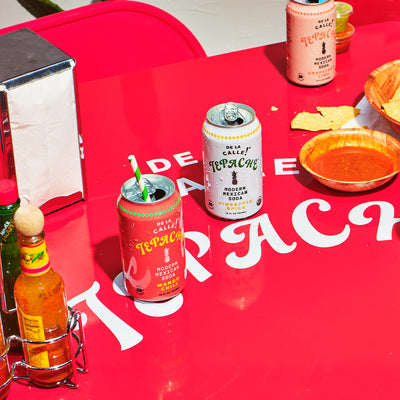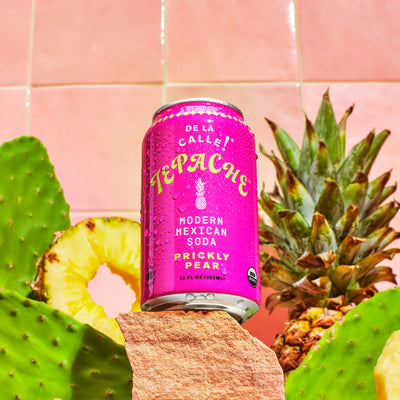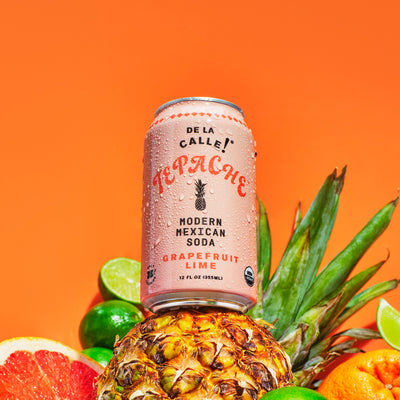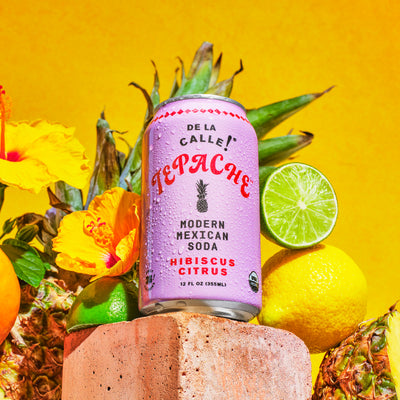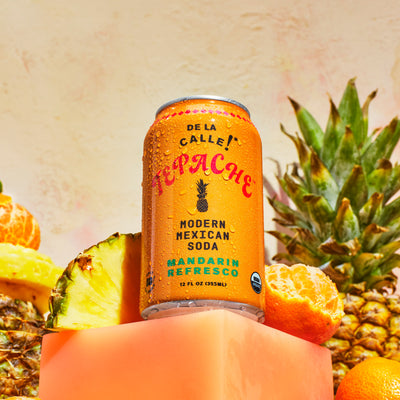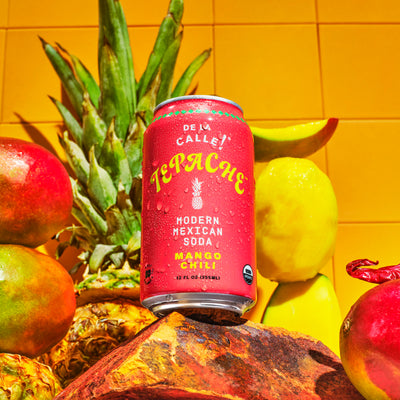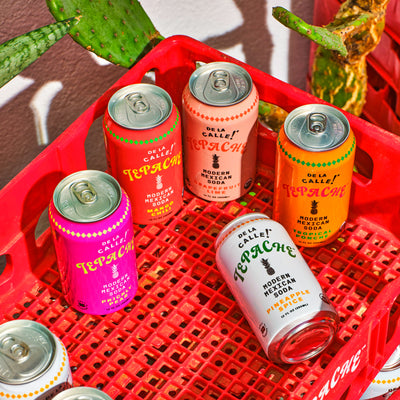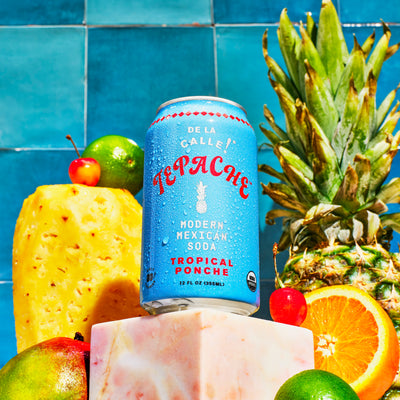Turbinado Sugar: What Is It and How Is It Used?

Even if you’ve never heard the name, you might recognize turbinado sugar as the darker, crunchier sugar often found dusted on top of baked goods and other sweet treats that is marketed as “raw” sugar.
In this article we’ll take a closer look at what turbinado sugar is, what differentiates it from other types of sugar, and a few of the ways it is commonly used.
Turbinado Sugar: The Basics
Turbinado sugar is easily distinguishable from other types of sugar based on its color and texture. Turbinado sugar is known for its large, crunchy crystals, light brown, caramel color, and very slight caramel flavor.
This distinct type of sugar is made from sugarcane and is only partially refined, meaning that it obtains some of the natural molasses and original flavor of the sugarcane.
For this reason, turbinado sugar is generally considered one of the most flavorful types of sugar. Although it is less processed than other types of sugar, turbinado sugar is not truly “raw” as some packing advertises because it is minimally processed. One common brand name for turbinado sugar is Sugar in the Raw.
Usually turbinado sugar is more expensive than regular white sugar and is often used to top baked goods, as part of a spice rub or crumble, or as a natural sweetener in beverages such as tepache, a traditional Mexican drink made from fermented pineapple.
Turbinado Sugar vs. Brown Sugar
Although turbinado sugar looks like brown sugar due to its color, it is quite different from the smooth, fine sugar we normally associate with the label “brown sugar.” The main difference between these two types of sugar are their texture and flavor.
The crystals of turbinado sugar are much larger and appear as individual pieces of sugar rather than the extremely fine crystals of brown sugar which can easily be mixed into smooth batters and doughs.
Additionally, turbinado sugar has a lighter, fainter molasses flavor than brown sugar, which has added molasses. Given that turbinado sugar only has a small amount of naturally occurring molasses, the flavor is more of a caramel and molasses mixture than the strong molasses flavor of brown sugar.
How is turbinado sugar made?
To make turbinado sugar from sugarcane, the sugarcane is first pressed to extract the juice. From there the juice is boiled once whereas the juice used to make white granulated sugar would usually be boiled multiple times to remove all the molasses and brown color.
Boiling the sugarcane juice causes the sugars in the juice to crystalize. Once crystalized, the crystals are then spun in a centrifuge to remove any extra moisture held by the crystals. The name “turbinado” comes from the Spanish word turbina which refers to the centrifuge used to spin the crystals.
Generally speaking, sugar made from sugarcane, like turbinado sugar, is better for the environment because it requires less energy and no added chemicals and makes less waste than sugar made from sugar beets.
Common Uses of Turbinado Sugar
Turbinado sugar is a delicious natural sweetener for both beverages and dishes, such as the classic Mexican street drink tepache. It’s good to keep in mind that turbinado sugar has the unique quality of maintaining its large, round shape when heated.
While it works well in many dishes, turbinado sugar is most commonly used as a crunchy topping on baked goods like muffins and cakes as well as on cereals and roasted vegetables such as sweet potatoes and beets.
Turbinado sugar can also be used in dry spice rubs for various meat dishes and in the mixture for homemade pie and tart crusts.
Outside the culinary realm, turbinado sugar is also used in sugar scrubs because it is a natural facial and bodily exfoliant.
Can turbinado sugar be substituted for other sugars?
The unique texture and flavor of turbinado sugar makes it an alluring choice and you might be wondering if you can swap turbinado sugar for regular granulated sugar and brown sugar in most recipes.
The short answer is kind of! You can absolutely cook and bake with turbinado sugar, but there’s a few things to keep in mind.
First and foremost, turbinado sugar is slightly more moist than regular white sugar and far less moist than brown sugar. For this reason, when a recipe calls for brown sugar, it’s not a great idea to use turbinado sugar in its place because your dish will most likely end up drier and crumblier than desired.
In terms of substituting turbinado sugar for white sugar, this can sometimes be a good option. It will give your baked goods a slightly more moist texture which can sometimes be a nice variation, especially for recipes with a pourable batter such as brownies or cakes.
However, for pastry and cookie doughs, the added moisture can sometimes negatively affect the final texture of the recipe because turbinado sugar doesn’t dissolve easily.
It’s also important to keep in mind that swapping turbinado sugar for white sugar will give your dish a light brown color and make the texture less smooth. Turbinado sugar is also less dense than both white and brown sugar, so it’s important to weigh out your sugar substitution rather than just doing a direct swap.
If a recipe calls for turbinado sugar but you’re out, you can mix equal parts white and brown sugar together to make the needed amount of turbinado sugar in a pinch. Conversely, if you only have turbinado sugar but need brown sugar, you can use turbinado sugar and a sweet, moist liquid such as apple sauce, honey, or melted butter to make sure your dish doesn’t come out dry.
Nutritional Information
Contrary to its light brown color, turbinado sugar is most nutritionally similar to white sugar. In a teaspoon of both turbinado and white sugar, there’s roughly 16 calories and 4 grams of carbohydrates.
Although turbinado sugar does have very small amounts of minerals like calcium, iron, and magnesium, it’s almost impossible to get even 1% of your recommended daily intake from turbinado sugar. Similarly, there’s some antioxidants in the molasses that’s left in the final product, but only trace amounts.
Overall, turbinado sugar does not have any notable health benefits when consumed in the recommended amounts and is very nutritionally similar to other types of sugar. In general, it’s good to limit your daily sugar intake because an excess of sugar can lead to dental issues and an increased risk of diseases such as Type 2 Diabetes, obesity, and heart disease.
Summary
Turbinado sugar is a delicious natural sweetener that’s distinct from other types of sugar because of its large, crunchy crystals and slight caramel and molasses flavor. Oftentimes turbinado sugar is incorrectly labeled as “raw” even though it is the product of slightly processed sugarcane.
The process used to make turbinado sugar leaves it drier and crunchier than other sugars, making it perfect for toppings and rubs. Turbinado sugar is also used in many traditional recipes like our very own Tepache varieties! Although it can sometimes be substituted for other sugars, it’s important to keep in mind the relative moisture level and weight of turbinado sugar when making swaps.
Even though there’s texture and flavor differences, turbinado sugar is nutritionally similar to other sugars and should be consumed in limited amounts to maintain a healthy diet. That being said, in moderate quantities, turbinado sugar gives foods and drinks a delicious, distinct, caramel flavor!
Sources:
https://www.sugar.org/sugar/types/
https://www.healthline.com/health/food-nutrition/benefits-blackstrap-molasses

